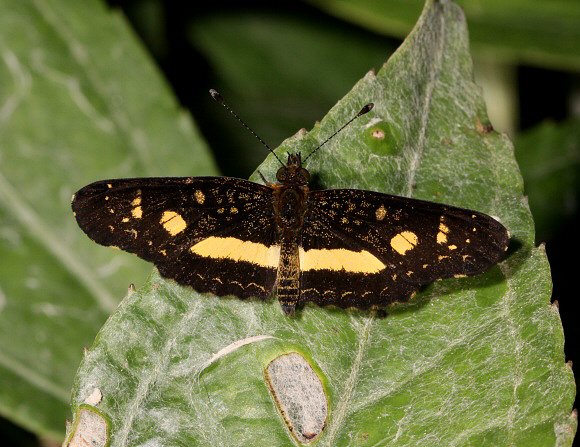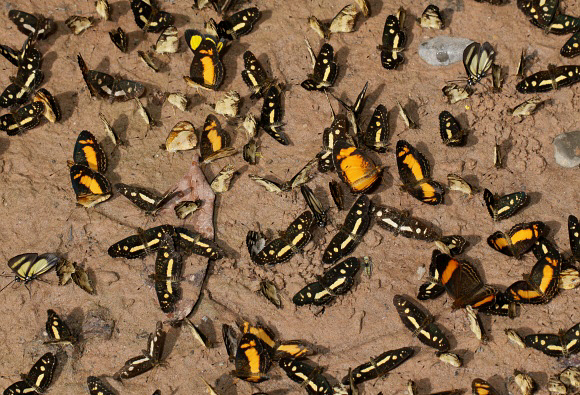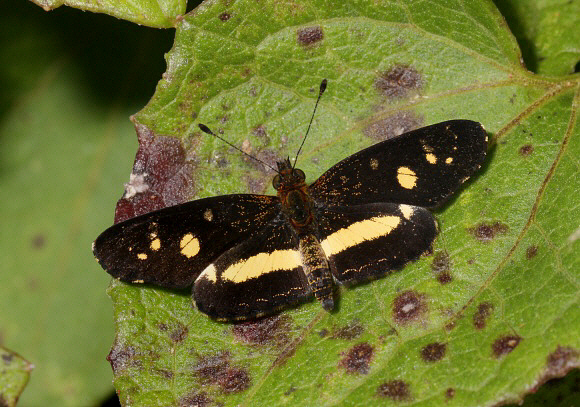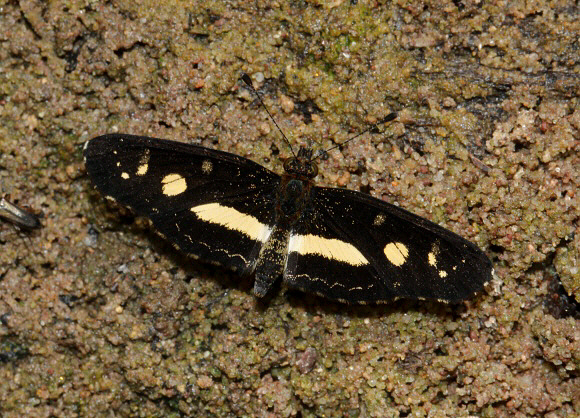
Introduction
The tribe Melitaeini is of worldwide distribution. It includes the Crescents and Checkerspots of North America, and many familiar European species such as the Marsh, Spotted and Heath Fritillaries.
Castilia are very closely related to Eresia, Anthanassa and Janatella, so closely in fact that these genera can only be distinguished by microscopic examination of the male genitalia.
The 13 Castilia species fall into 2 distinct groups. The first group includes castilla, northbrundii, neria and perilla. All of these have black wings marked with patches of orange and are convincing mimics of Altinote species. The second group includes ofella, myia and angusta. These all have whitish spots on the forewings and a broad creamy median band on the hindwings. These markings are repeated on the underside which is yellowish and has a series of crescents around the margins.
Castilia angusta is a very common and widespread species, found from Colombia to Argentina.
Habitats
This species is found in forest edge habitats including roadsides, riverbanks and areas of secondary growth, at altitudes between about 100-1600m.

Lifecycle
The eggs of Castilia species are laid in batches of between 30-80 on the underside of leaves of the foodplants. They are laid in layers, a defence strategy that ensures that the bottom layer cannot be parasitised by Trichogrammatid wasps. The topmost eggs hatch first. The larvae then immediately eat their egg-shells, allowing those from the lower layers to hatch.
Castilia larvae feed gregariously on Acanthaceae, spinning a thin silk web over the leaves. In the early instars they eat only the leaf tissue, and skeletonise the leaves so that only the midrib, veins and cuticle remain. They are described by DeVries as being covered with dense bristles and with each segment bearing fleshy protuberances.

Adult behaviour
Males are sometimes seen singly but are more typically encountered in groups of 10-100, imbibing mineralised moisture from road surfaces, river beaches, dry riverbeds, peccary wallows and sunlit trails. They usually hold their wings fully outspread when feeding or at rest.

